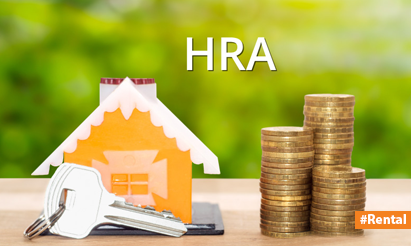What exactly is rental yield?
When a property is rented, it generates a fixed monthly income. Rental yield is simply the proportion of the property value earned from rental revenues over the course of a year. It is one of the most frequent ways for calculating a property’s Return on Investment (ROI). It describes the concept in depth and discusses its significance in real estate.
When intending to invest in real estate, it is important to learn a few real estate jargons to guarantee a smooth and risk-free transaction. Rental yield is one such word.
Rental yield is defined as the annual rental value obtained from an income-generating asset expressed as a percentage of the property’s value. Rental yield is a commonly used word in real estate that defines the rate of Return on Investment (ROI) for both commercial and residential property. It is an important statistic in property data and has a direct impact on product demand. For example, the higher a property’s rental yield, the higher the revenue received and the greater the asset’s desirability across investors.
Furthermore, rental yields are often used to compare real estate investment to other investment channels, such as mutual funds, equities, gold, and fixed deposits, in order to forecast market developments.
How do you compute rental yield?
Rent yield may be calculated in two ways.
Gross rental income
The annual rental value earned from the leased property is referred to as the gross rental yield. It does not account for expenditures incurred in the maintenance and repairs of a property, as well as taxes charged.
- Gross rental yield = (Annual rental income/ Property value) x 100
- Annual rental income= Monthly rental income x 12
- Property value= Purchase price of the property
- For instance – Monthly rent for a house is Rs 20,000
- Purchase value of the house = Rs 50, 00,000
- So, annual rental income = 20,000 x 12 = Rs 2, 40,000
- Gross rental yield = (2, 40,000/50, 00,000) x 100 = 4.8 percent
However, because gross rental yield excludes the aforementioned charges, a greater yield does not always reflect a better rental value. An increased proportion of maintenance costs or imposed taxes might have an effect on the total rent received.
Rental yield net
In contrast to gross rental yield, net rental yield incorporates all expenditures for property upkeep and taxes paid over the year. Mortgage interest and taxes, on the other hand, are not part of yearly costs and hence should not be counted when calculating net return.
- Net rental yield = [(Annual rental income- Annual expenses)/ Property value] x 100
- Let’s consider that annual expenses incurred on a property during the year are Rs 50,000
- Net rental yield= [(2, 40,000 – 50,000) / 50, 00,000] x 100 = 3.8 percent
The net rental yield analyses the revenue produced from an investment property. It provides a realistic and practical image; hence, this method is recommended when estimating a property’s rental yield.
While the rental yield is a trustworthy indicator for determining the money you will make from your home, keep track of it on a periodic basis to identify a consistent monthly rental.
Disclaimer: The views expressed above are for informational purposes only based on industry reports and related news stories. PropertyPistol does not guarantee the accuracy, completeness, or reliability of the information and shall not be held responsible for any action taken based on the published information.




